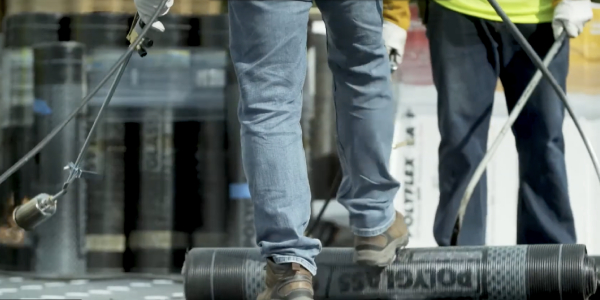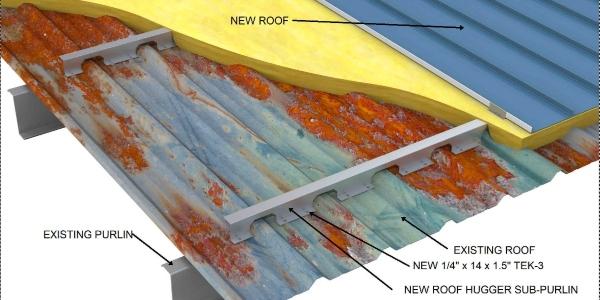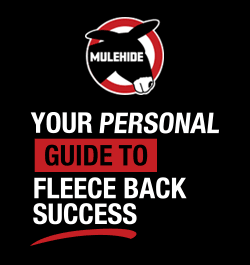A guide to your range of options in commercial roof installations: Part 1

By Polyglass.
There are many different options when you start on a new job, including ones to consider before the installation even begins! This guide helps narrow down the choices.
Starting a roofing installation can be intimidating, both as a client and a contractor. There are a slew of choices and options before you. From product options to materials available on the market, it can quickly become overwhelming. In addition to that, you must ensure that the choices made are tailored to the project. Some considerations include how long it’s going to last and how much the entire project will cost. Thankfully, the experts at Polyglass have your back. They’ve created a guide to help you determine what you need.
Installation prep
As a contractor, you should start by working with the client to choose the right roofing system for their particular needs. Advise them on what will work best for their building and create an in-depth plan for each project stage. This will help you quote an accurate time frame and provide a detailed estimate of the cost involved.
If you’re a client, take heed of the contractor’s advice regarding your particular roof needs. A good contractor will offer insights regarding the materials that will work best for your requirements.
To help you decide on the materials to choose for a commercial roofing project, the next few sections will explore Polyglass’ range of roofing products. We’ll cover what each product is, how it is installed and what kind of roofing needs it suits.
Modified bitumen membranes
Modified bitumen membranes are a type of roof system that combines asphalt-based bitumen with additional materials such as polymers or rubber. This creates a versatile roofing system that can meet a wide range of roofing needs.
There are two main types of modified bitumen membranes; APP (atactic polypropylene) and SBS (styrene-butadiene-styrene). APP membranes are reinforced with plastic to make them more rigid. These membranes are easy to install and particularly suit smaller commercial roofs.
SBS membranes incorporate rubber to create a flexible elastomeric roofing layer. These membranes can react to changing temperatures, creating a roofing system that can stand up to more extreme weather conditions that some parts of the country face.
Polyglass offers a wide range of innovative APP and SBS modified bitumen membranes to suit different roofing needs. For commercial buildings situated in colder areas, the Elastoflex SA P Polar Cap membrane provides great insulation. For those looking for a more energy-efficient roof in sunnier climates, the highly reflective Polyfresko G SA membrane is a great choice.
Installation
Modified bitumen membranes can be installed in two ways; torch-down application and self-adhering membranes. Each method has its strengths and weaknesses.
Torch-down membranes
Torch-down roofing membranes are installed using a gas or propane torch. The membrane rolls are gradually unfurled across the roof, with the bottom layers being heated by the torch. This welds the membrane into place, adhering it to the roof.
Torch-down membranes offer fantastic waterproofing because the seals are essentially fused together, creating strong watertight seams. However, the torch-down method does come with safety concerns as it poses a significant fire risk and can also release potentially harmful toxic fumes. They also take longer to install than self-adhering membranes.
Polyglass offers a range of torch-down modified bitumen membranes, including the Polyflex G APP cap sheet. This durable membrane can stand up to debris that can puncture or tear a roof and features FASTLap technology for easy application.
Self-adhered membranes
A self-adhered modified bitumen membrane features a durable dual-compound APP or SBS top layer to deal with weathering and a powerful adhesive bottom layer for quick and easy application. Self-adhered membranes were pioneered by Polyglass in the 1990s thanks to the development of innovative ADESO® technology. Polyglass has continued innovating and evolving its product range to include patented technologies likeSEALLap ULTRA and FASTLap end laps.
During installation, the self-adhered membranes are usually installed in at least two layers; a base sheet and a cap sheet. After allowing them to relax, the membrane sheets are cut into manageable lengths and placed on the roof. The protective film on the end laps is then removed, and the sheets are pressed into place.
Once a section is complete, pressure is applied in the form of a roller to make sure that the membrane fully adheres to the roof. This process is repeated for both the base sheet and cap sheet layers to create a dependable and durable roofing system.
Self-adhered membranes do not pose the safety risks that torch-down membranes do. No naked flames are required and no toxic fumes are released. This allows for much safer and easier applications.
What is ADESO technology?
Polyglass’ industry-leading ADESO Self-Adhered modified bitumen membranes feature innovative technologies such as granule-free FASTLap end laps which allow for quick and easy installation. SEALLap Ultra technology creates unrivaled watertight monolithic seals along each seam, eliminating the risk of water leaks.
ADESO technology is available across most of Polyglass’ range of APP and SBS modified bitumen membranes, with a wide variety of surface colors and types to suit any roofing application.
Lifespan
Modified bitumen membranes will usually last for around 10 to 30 years. With some basic maintenance, the lifespan of a modified bitumen roof can be extended even further. Thankfully, these types of roofs are some of the easiest to maintain.
This makes modified bitumen membranes more cost-effective, durable and versatile than other commercial roof installation methods such as EPDM cold-applied roofs, TPO single-ply roofing and metal roofing systems.
Look out for Part 2 of this guide to learn about your underlayment, coating and accessory options!
Original article source: Polyglass
Learn more about Polyglass in their Coffee Shop Directory or visit www.polyglass.us.




















Comments
Leave a Reply
Have an account? Login to leave a comment!
Sign In